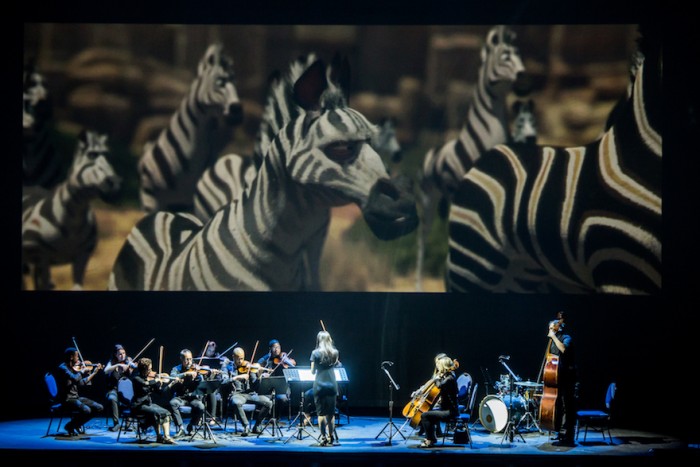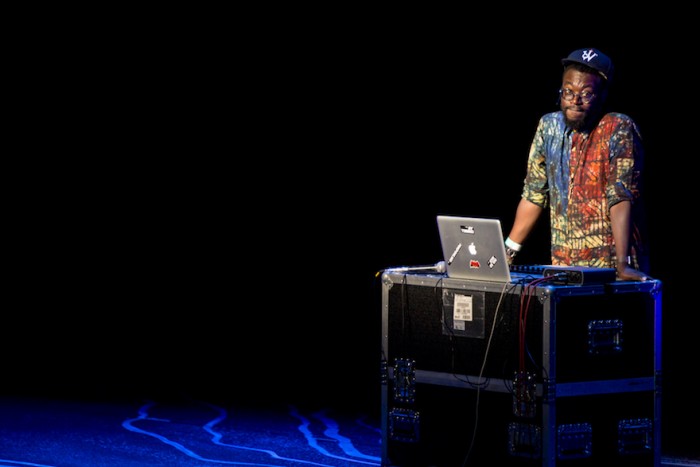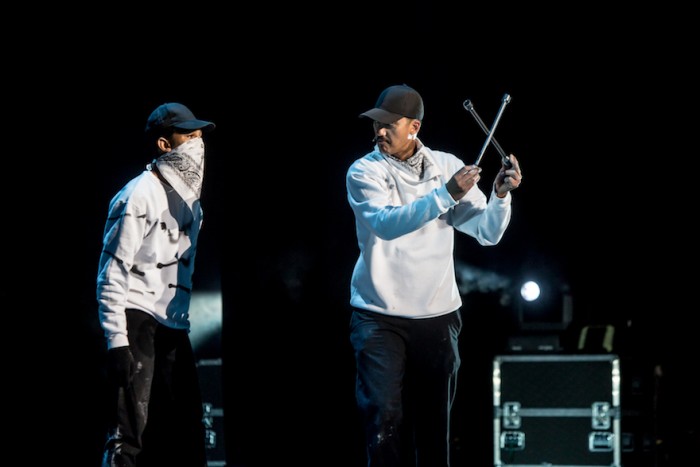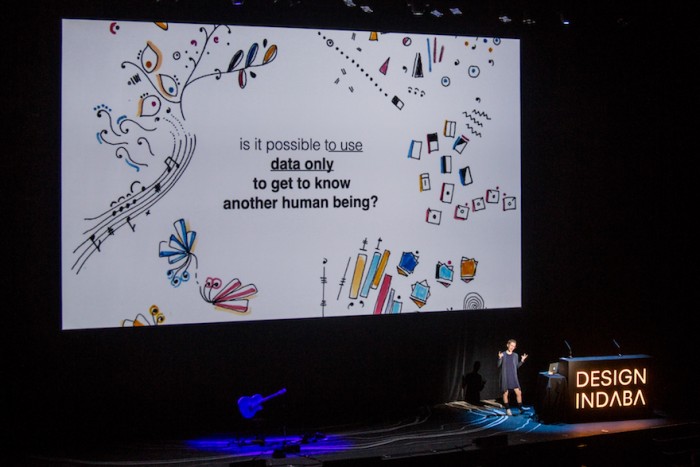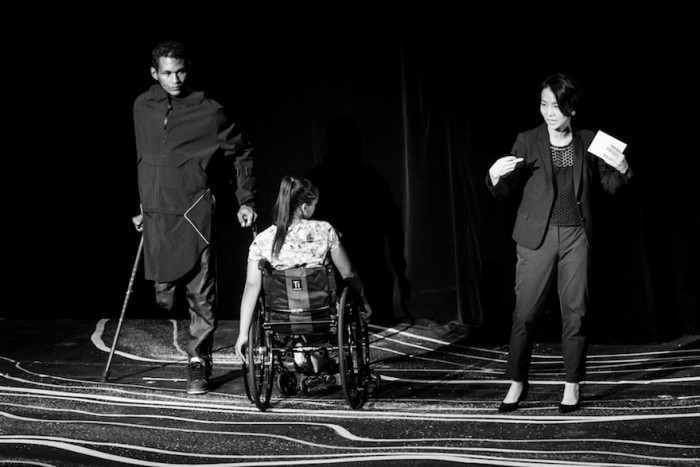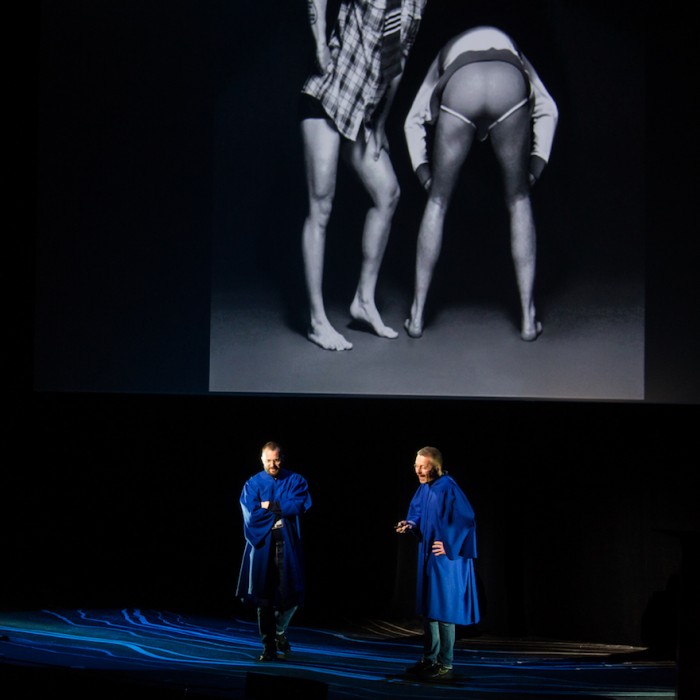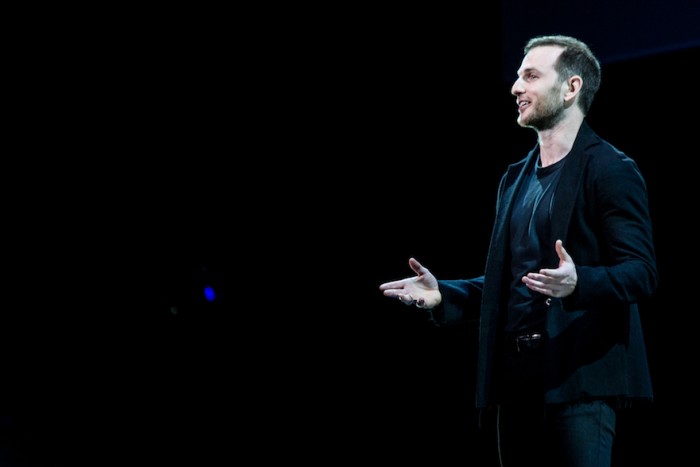From the Series
If Day 1 at Design Indaba showed us design that responds, Day 2 showed us design that insists. From Kate Moross rebelling against polarities to Winy Maas’ powerful incantation of ‘What’s next’ - so many of the speakers on Day 2 of Design Indaba 2017 presented design as restless and rule-less, not resolved. They stay happily unsatisfied, insisting their disciplines change form and push beyond traditional boundaries in order to truly respond to the challenges they see in the world.
Representation in narrative
An early emergent theme on Day 2 was an exploration of African (mis)representation, and the insistence to include new forms of African narratives in art and culture.
In the first talk of the day, Cape Town-based animator and producer Stuart Forrest took took us on an emotionally honest journey through his career - from being fired from an early animating gig to buying into a company, to liquidating that company and starting again, to finding enormous success, then having to sell his house and start all over again, again. His persistence can be credited to his long held belief that he had something to contribute to the world. And he was right. As the producer of two of Africa’s most successful film exports, Adventures and Zambezia and Khumba, Stuart’s design practice is about more than the finished work. He cares deeply about hiring African talent, to tell African stories in ways that resonate here at home and with the rest of the world.
Similarly, musician Bill Salanga - of Blinky Bill and Just a Band fame - is interested in “a soundtrack for afrofuturism; a world beyond us that still sees us within it.” In locating African experiences within non-traditional narratives like electronic music or science fiction, Bill is encouraging the African imagination to extend beyond what is known and build the continent’s creative economy on an entirely different ‘planet’.
For Jabu Nadia Newman, it was the misrepresentation of African women on film through four over-used and reductive stereotypes - the slave, the maid, the sex worker/jezebel and the angry black woman - that led her to imagine and then create the world of her intersectional feminist web series The Foxy Five that explores the dynamics between gender, sexuality, class, race and more. Newman is a fresh new voice, manifesting five fresh female archetypes on screen. In this way, she is writing into existence previous invisibilities and defining intersectionality in front of and behind the camera.
Using charcoal, chalk, oil crayon and spray paint on segments of walls hung from the ceiling, artist Robin Rhode expanded the idea of the drawing field and acknowledged that he is not the sole owner of the images he creates. In what was an arresting and urgent live performance piece, Rhode showed how he uses drawing to reflect aspects of daily life in South Africa, imbuing them with greater meaning by contextualising those images within the wider historical narrative of racism and inequality.
Human machines
If one theme on Day 2 was the insistence of African participation in design and culture, another was the insistence on human participation in processes dominated by technology.
Isabel Mager’s insightful and incisive work 5000times seeks to identify the role of humanity and the human body in the building of our smart phones, tablets and other high-tech devices. A new iPad, for example, will pass through the hands of 325 people before reaching the person who first bought it. Where many technology companies would like to have us believe that the production process is fully-automated, Mager instead analysed and interpreted actual video evidence of that process to show how human labour is being exploited through painstakingly repetitive manual tasks in order to service our demand for the latest gadgets.
Giorgia Lupi also used her time on stage yesterday to interrogate the humanity behind big data. Preferring drawing, not coding, as her entry point, Giorgia uses “slow, small and analog data transmission” in order to better translate and see through the numbers. By removing the computer and forcing herself to imagine data in a different way - first through her MOMA-acquired project Dear Data and more recently through a collaboration with musician Kaki King recreated on stage yesterday - Giorgia is able to reveal patterns and nuanced aspects of the human experience that data would otherwise drown.
When Global Grad Bo-won Keum began working with Books to Prisoners, the organisation that donates free books to prison inmates, she assumed the solution would be a technological one. Keum initially spotted inefficiencies in the charity’s systems that she had planned to streamline with a database and other largely computer-based ‘efficiencies’. But in learning more about the experiences of real people on both sides of the prison bars, Keum realised that “efficiency was never really the point.” A design solution, in this case, was not about being faster or automating more processes; it was finding a way to celebrate the community’s shared humanity and belief in the transformational power of books.
Design as kindness
Finally, kindness. In their insistence on designing with kindness, other speakers showed how they have created authentic solutions with and for the communities they served.
Global Grads Rhys Jones and Grace Jun each presented work that sought to listen to the needs of their users to inform their creative approaches. Jones used evidence-based design techniques - research, user-testing and validation of prototypes - to design a better neonatal intensive care unit chair to help new mothers comfortably experience skin-to-skin contact with their babies.
Designing for inclusion, Jun uses fashion and technology to empower people with diverse human abilities. Rather than seeking some notion of ‘perfection’ in what she creates, Jun uses design as a means of mutual exploration with the people who will use the clothes.
Lernert & Sander’s sensationally sassy performance ‘Copy Cats’ used humour as another form of kindness. Invoking Mandela, the Pope, Oprah and Beyonce, and inviting a church choir on stage to perform a playful song about forgiveness, the duo were able to find the funny side of having their work ripped off.
As Thursday’s keynote speaker, AirBnB co-founder Joe Gebbia explained, it’s the responsibility of designers to seek out the “duct tape beacons” of the world; the lengthy, cumbersome processes, the inefficient or makeshift solutions the exist today, and turn them into a relevant, responsive and beautiful in its simplicity. That is the lesson of the company he created, and an organising principles that still guides his work today. With a mission to create a community where anyone can belong anywhere, Gebbia has continued to leverage AirBnB’s core competencies - like connecting people to income and experiences through hospitality and building trust between strangers around the world - to solve new problems presented by displacement. It’s a model for designing through empathy that is needed now more than ever.
On Day 2 of Design Indaba 2017, we heard a collective call for proactivity and restlessness in design. An insistence on listening, experimenting, learning, iterating and stretching beyond the comfortable boundaries of one’s discipline in order to see ‘the duct tape’, spot the gaps and meet design challenges wherever they are in the world.



